Iceland’s Waterfalls
“Iceland” playing cards with scenic aces designed by Guðmundur Thorsteinsson were first published in 1923
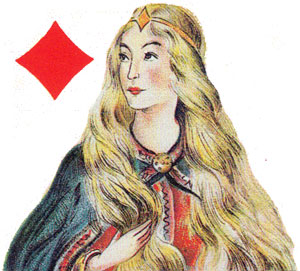
Iceland’s Waterfalls “Mugg’s cards”
Icelandic playing cards with scenic aces designed by Guðmundur Pétursson Thorsteinsson (Muggur, 1891-1924) were first published in 1923 by Bjarni P. Magnusson, Reykjavik, as “Islensk l'Hombre spil No.1”. Guðmundur Thorsteinsson was an Icelandic artist and film actor who had studied at the Royal Painting Academy in Copenhagen. In his pack of cards the four Jacks are dressed as workmen, fishermen or farmers, and the Queens and Kings are dressed in traditional Icelandic costume while the Kings also hold royal insignia. All social strata are represented. The Aces show picturesque scenes from different parts of Iceland (click the aces to see up-side-down).
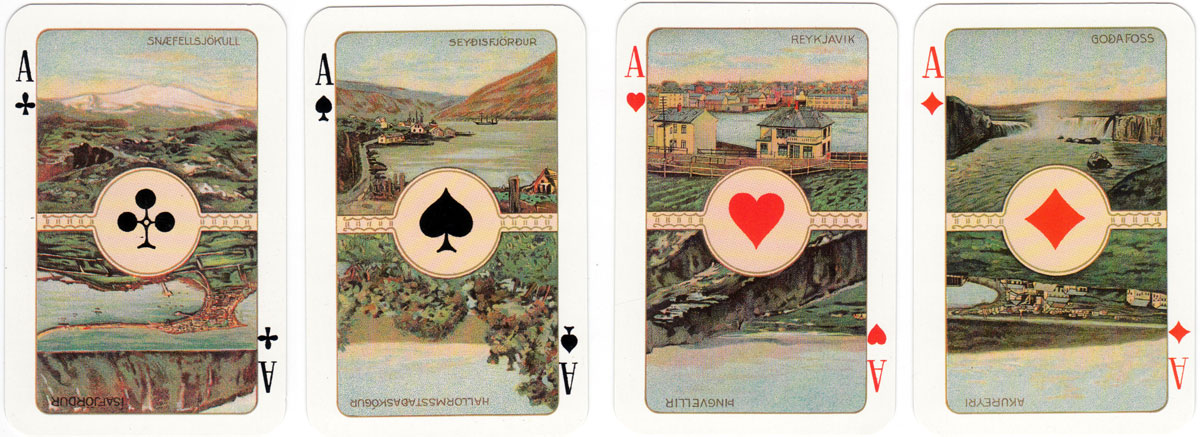
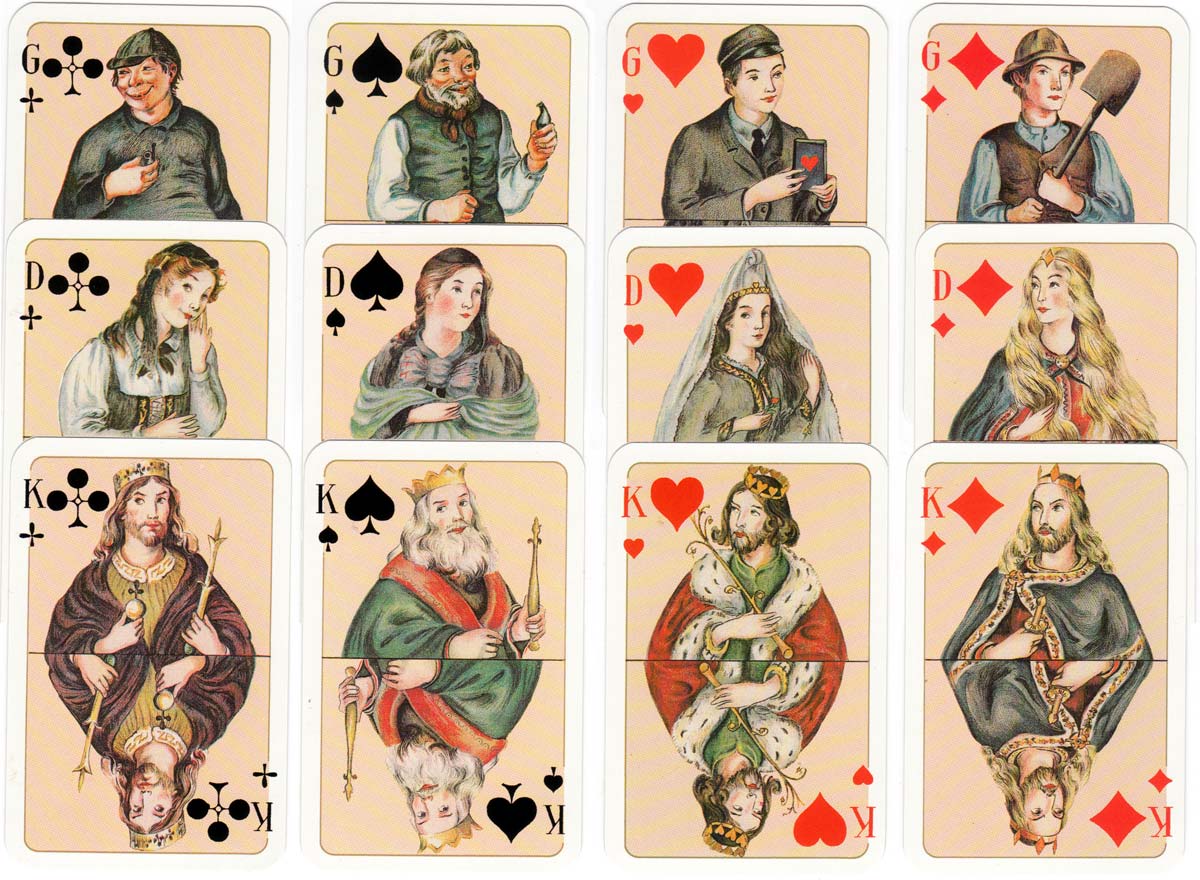
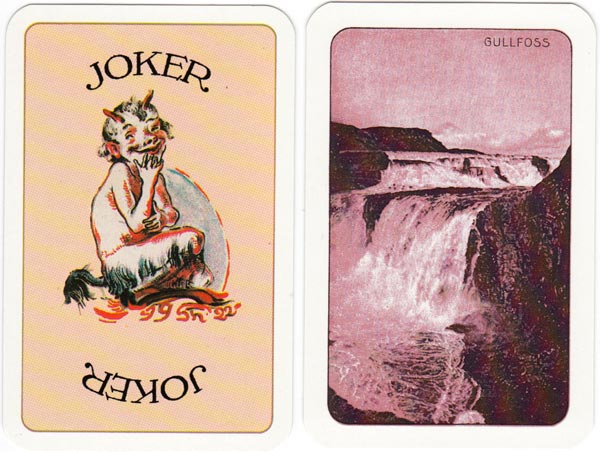
Above: “Icelandic” playing cards designed by Gudmundur Thorsteinsson and first published in 1923. Reprinted in 1977 by V.A.S.S. Leinfelden as “Icelandic”. The indices are in Icelandic language: K = Kungur (King), D = Drottning (Lady), G = Gosi (Jack). The Joker is a small devil and the back design shows Gullfoss waterfall (pink or green). Gudmundur Thorsteinsson's works are characterized by a dreamlike and playful quality - see example. The influence of impressionism can be seen. Images courtesy Rex Pitts.
By Rex Pitts (1940-2021)
United Kingdom • Member since January 30, 2009
Rex's main interest was in card games, because, he said, they were cheap and easy to get hold of in his early days of collecting. He is well known for his extensive knowledge of Pepys games and his book is on the bookshelves of many.
His other interest was non-standard playing cards. He also had collections of sheet music, music CDs, models of London buses, London Transport timetables and maps and other objects that intrigued him.
Rex had a chequered career at school. He was expelled twice, on one occasion for smoking! Despite this he trained as a radio engineer and worked for the BBC in the World Service.
Later he moved into sales and worked for a firm that made all kinds of packaging, a job he enjoyed until his retirement. He became an expert on boxes and would always investigate those that held his cards. He could always recognize a box made for Pepys, which were the same as those of Alf Cooke’s Universal Playing Card Company, who printed the card games. This interest changed into an ability to make and mend boxes, which he did with great dexterity. He loved this kind of handicraft work.
His dexterity of hand and eye soon led to his making card games of his own design. He spent hours and hours carefully cutting them out and colouring them by hand.

Leave a Reply
Your Name
Just nowRelated Articles

Tatra Mountains souvenir
Photographic views of the Tatra Mountains with added touches.
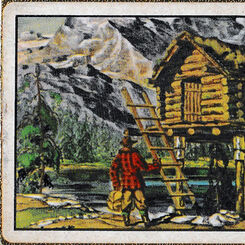
Alaska scenic playing cards
Alaska scenic playing cards featuring scenes of Alaskan life, USA, c. 1960.
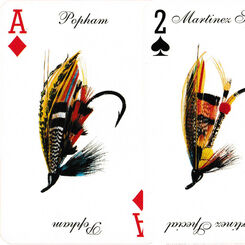
Salmon Flies
Icelandic pack featuring a different salmon fly on every card.
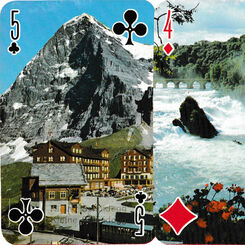
Swiss Souvenir
55 different scenic photographic views of Switzerland.
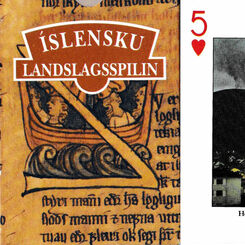
Icelandic picture playing cards / Islensku landslagsspilin
Icelandic picture playing cards with photography by Gudmundur Ingólfsson.
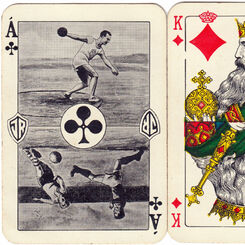
Reykjavik Athletic Club playing cards
made in Iceland
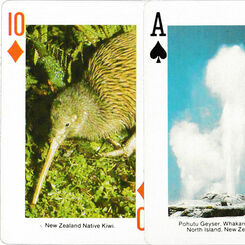
Scenic Views of New Zealand
A ‘Rangitira’ souvenir showing 52 different scenic views of the North and South Islands of New Zeala...

Unnamed Scenic aces of Rio de Janeiro
Cards made by C.L.Wüst of Germany for Brazil
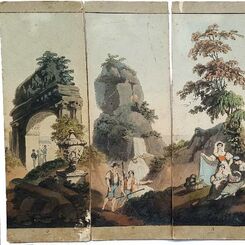
Myriorama
Myriorama of Italian scenery, 1824.
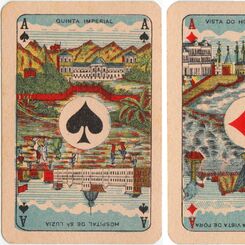
Brazil Pictorial Aces
Genoese pattern with Pictorial Aces for Brazil by Brepols, Turnhout, c.1920.
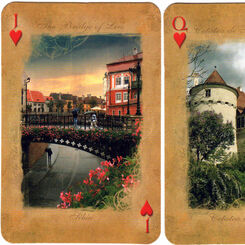
Romania Unique Places
Romania Unique Places souvenir playing cards by Age Art.
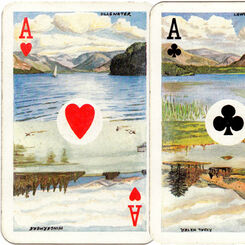
Lakeland
Lakeland playing cards by Stuart Lawrence depicting famous characters & views of England’s Lake Dist...
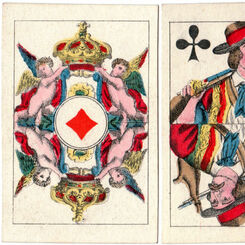
Non-standard deck by Maillard
Attractive deck by the Portuguese maker Maillard, c.1885 with scenic aces and German-style courts
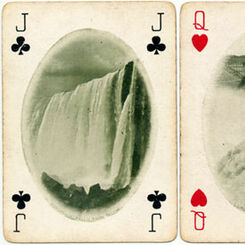
Niagara Falls Souvenir
Niagara Falls Souvenir Playing Cards copyrighted 1901 by the Niagara Playing Card Co. Buffalo NY PO ...

Iceland Mythological Playing Cards
Iceland Mythological Playing Cards designed by Sigurlinna Pétursson, 1958

Islenzk Spil
This historical Icelandic deck was first published in c.1930 and shows the native Icelandic Vikings ...
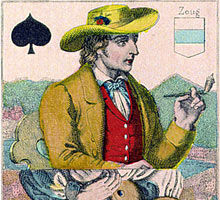
Swiss Regional Costumes Playing Cards, c.1890
This Swiss Regional Costume pack can be seen as an early form of tourist souvenir which subsequently...
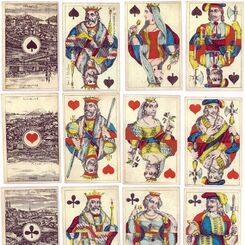
Swiss Scenic Ace Souvenir Cards, c.1850
Souvenir pack with Scenic Aces made by Müller (Diessenhofen), c.1850.
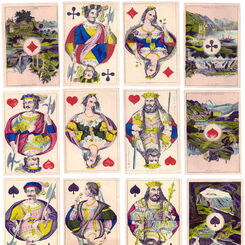
Swiss Scenic Ace Souvenir Cards, c.1860
Souvenir pack with Scenic Aces made by J. Müller (Diessenhofen), c.1860. The courts are conventional...
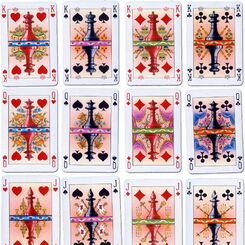
Icelandic Chess playing cards
Innovative "Icelandic Chess" pack, designed by Tryggvi Magnússon and manufactured by Alf Cooke Ltd (...
Most Popular
Our top articles from the past 60 days


 Your comment here. Your comment here. Your comment here. Your comment here. Your comment here. Your comment here. Your comment here. Your comment here. Your comment here. Your comment here. Your comment here. Your comment here. Your comment here. Your comment here. Your comment here. Your comment here. Your comment here. Your comment here. Your comment here. Your comment here. Your comment here. Your comment here. Your comment here. Your comment here. Your comment here. Your comment here. Your comment here. Your comment here. Your comment here. Your comment here. Your comment here. Your comment here.
Your comment here. Your comment here. Your comment here. Your comment here. Your comment here. Your comment here. Your comment here. Your comment here. Your comment here. Your comment here. Your comment here. Your comment here. Your comment here. Your comment here. Your comment here. Your comment here. Your comment here. Your comment here. Your comment here. Your comment here. Your comment here. Your comment here. Your comment here. Your comment here. Your comment here. Your comment here. Your comment here. Your comment here. Your comment here. Your comment here. Your comment here. Your comment here.




















